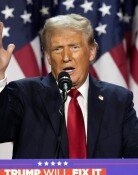Good Indian, bad Indian
"The only good Indian is a dead Indian."
Immediately after the American Civil War ended in the late 19th century, the white people in the country mopped up Indians interfering with the westward movement. Chief Towasi of the Comanche tribe surrendered. In poor English, he plead for mercy, saying, "Towasi, good Indian." In response, General Philip Sheridan who was commanding the suppression operation said, "The only good Indians I ever saw were dead." The words then passed on after they were honed into an aphorism, "The only good Indian is a good Indian," and "All Indians alive are bad." The views of white people who weighed advantages and disadvantages came to distinguish between good and bad Indians.
On March 20, President Park Geun-hye presided a debate session and embarked on a strong regulation reform drive. She said, "Regulations that hinder job creation and investment are cancer to our economy, but some regulations are needed for personal information protection. Good regulations should be improved while bad ones should be rooted out." She presented guidelines of distinguishing between good and bad regulations.
Following the president`s remarks, all government agencies waged an all-out regulation reform. Improvement and timeline for regulations that were raised as issue at the debate session were finalized: they include reform regulations regarding certificate verification that blocks Chinese people from purchasing the so-called "Cheonsongi coat" from Korean online shopping malls, food truck regulations blocking young people hoping to start restaurant business with limited capital. These are bad regulations that need to be rooted out since deregulation would lead to increasing sales and vitalize youth start-ups.
Everything is clear up to this point. However, the borders of good and bad become vague when going on to the next stage. Shutdown system that sparked controversy between the Gender Equality and Family Ministry and the Culture, Sports and Tourism Ministry is a bad regulation that should be abolished to invigorate game industry and create related jobs. However, the very regulation is a good one for parents who fear their child`s game addiction.
The problem is that these regulations that lie between good and bad are the critical key to job creation and expansion of corporate investment. Casino regulations fall into this category, too. In Singapore, casinos were a forbidden business for 40 years. However, when Lee Hsien Loong became prime minister in 2006, he allowed casinos despite opposition from his father and former Prime Minister Lee Kuan Yew. Back then, it was a desperate measure to vitalize the Singaporean economy. In 2010, he opened a resort complex that accommodates two casinos allowing entrance by local people. The result was creation of 50,000 new jobs and GDP growth rate of over 10 percent.
The criteria of good and bad changes. For example, the U.K.`s Red flag act, which is often regarded as one of the most absurd regulation in history, mandated a person to wave a red flag in front of the vehicle as a warning so that it doesn`t threaten the safety of people in horse carriages or pedestrians. When the act was enacted in 1865, it was the world`s first advanced road traffic law given then road conditions. However, British auto industry then permanently lagged behind that of Germany and France due to this regulation that limited the speed of a vehicle to below a person`s.
Since regulations can be either good or bad based on how it is viewed, a keen insight is needed to predict the profits and losses in the future. If the regulation is judged to be necessary for the country`s future despite expected opposition, the leader should be bold enough to push through and determine the goodness and badness of a regulation. Our country needs drastic regulation reform under such a leadership.







